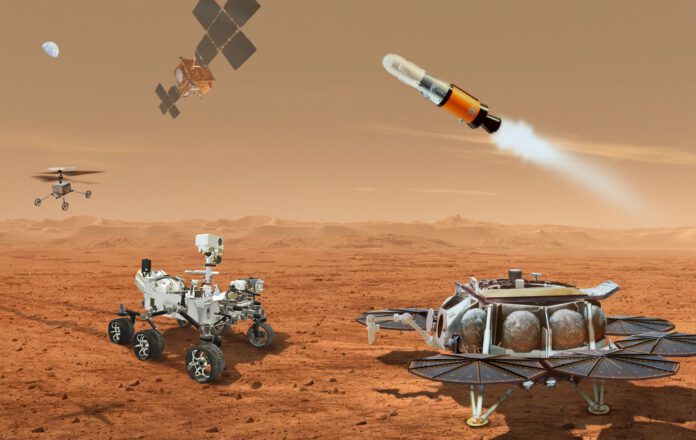
Constraints on the Mars Sample Return Programme: High Costs and Extended Timeline
The target date, 2040, is too far off and the cost, at a substantial 11 billion dollars, is considered too high. Therefore, a reevaluation of the programme is necessary. However, the specifics of how to redesign the programme remains uncertain, as NASA is still deliberating on this issue.
This deliberation was apparent during a recent press conference about NASA’s Mars Sample Return programme. This programme aims to return materials collected on Mars to Earth for detailed analysis, which is critical as these samples can provide extensive information about Mars. This invaluable information could help in preparing for manned missions to the red planet. Additionally, researchers hope these samples may help answer whether there has ever been life on Mars.
Existing Plans Deemed Inadequate
Scientists are eagerly waiting to analyse the first Mars samples. An update on this programme, however, did not provide much additional clarity. NASA’s conclusion from the conference mainly suggested that the current plans are inadequate and need a revision. Yet, the specifics of how these revisions should be carried out remain unclear. Even NASA is still seeking innovative ideas from their staff.
High Cost and Long Duration Pose Fundamental Issues
NASA’s dissatisfaction with the current plan results from two primary reasons. First, the plan has a high cost, approximately 11 billion dollars or around 10 billion euros, just to collect the materials on Mars. Additionally, the existing plan would take a significantly long time, with the samples only reaching Earth by 2040. According to NASA’s head, Bill Nelson, “spending 11 billion dollars and delaying the return until 2040 are both unacceptable”.
Complex Mission
Transporting materials from Mars to Earth is a difficult and expensive venture, hence, the high costs and long timelines. Nelson emphasised the complexity of this process, stating, “safe landing and retrieval of samples, launching a rocket from a planet other than Earth, something that has never been done before, and safely transporting the samples more than 33 million million miles is not a trivial task”. Yet, the current plan’s demands on NASA’s budget and patience are too high. As Nelson suggested, “We must think outside the box and find a way to bring the Mars samples back to Earth in a more affordable way and within a reasonable timeframe.”
Innovation for a New Plan
The task for NASA staff now is to come up with a new plan, one that is significantly cheaper and can enable the return of Mars samples to Earth by the next decade. This requires combining innovative technologies with existing and proven effective technologies. NASA also plans to engage the private sector in developing means to not only reduce costs but also decrease the complexity and risks associated with the Mars Sample Return mission.
Final Remarks
NASA is eagerly seeking new ideas both internally and externally. And they seem to be in a hurry, as the objective is not only to cut costs but also to speed up the process. It will be interesting to see what alternative plans surface in the coming months and which one NASA will eventually choose.











